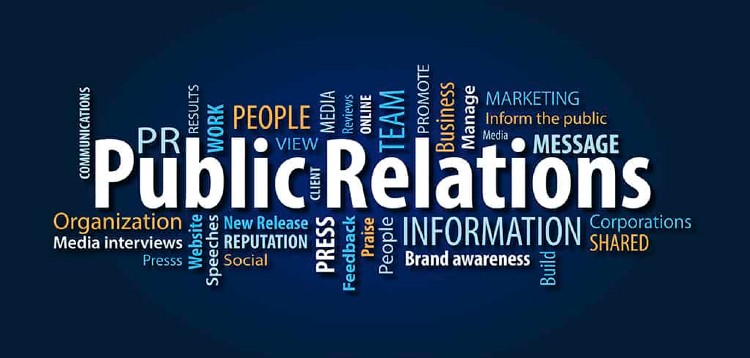No matter the kind of business that you have, you’d probably agree that one of your main goals is to make money and you’d likely also admit that it’s hard to do that if people don’t know about you. That’s where public relations come in by helping you introduce yourself to the public through strategic storytelling.
By sharing your brand’s story with your audience, you’re able to tell them who you are and what you do with the goal of making sure that the public has a favorable opinion of you. Delivering positive messaging is the start of developing a mutually beneficial relationship between your business and your audience.
There are two primary forms of public relations: digital PR and traditional PR. While they both help increase brand awareness with positive messaging, they do it in different ways. Determining which is best for your business depends on where your target audience is and how you want to tell your brand’s story. There’s rarely a clear-cut answer on which is the best for your business and in the end you may determine that a healthy mix of the two approaches is the best strategy for you.
Before determining the best PR strategy for your business, let’s first define what makes up both traditional and digital public relations and how they’re used to build brand awareness.

Traditional Public Relations
This is the kind of public relations that many people think of traditionally when mentioning PR and brand advertising. Traditional PR is typically in print and can include speech writing, press releases, and event planning but the main tool used for this form of brand awareness is press outreach. You’ll typically see traditional PR delivered in newspapers, magazines, radio, and television.
Professionals accustomed to using traditional PR probably have a healthy relationship with several media-related contacts such as reporters and journalists and they use these relationships to gain positive media coverage for their business. While this is often leveraged for awareness, it’s also used in times of crisis when companies need or want to release statements to assure the public of their support or viewpoint.
Benefits
Traditional PR is a highly personalized approach for building awareness putting much of the control in the hands of the business allowing them to choose the exact messaging they want to be delivered. The objectives can be tailored to specific goals and its reach is broad. Millions of consumers still make use of traditional media so while the world is largely digitally focused, there’s still a time and place for traditional public relations.
Limitations
While traditional PR can be successful in increasing brand awareness, it does have several limitations that are becoming more evident as digital options are expanding. While it’s still considered a useful method of public relations, its applications and measurability are limited.
One of the major drawbacks of traditional PR is that it’s a one-way communication with limited opportunities for feedback and therefore it’s hard to gauge its effectiveness. Viewership and readership numbers are considered estimates so they’re not a great way to determine your return on investment. In general, the only way to know if your campaign was a success is to determine how many times your business was mentioned and if it was in a favorable light.
While traditional PR still serves its purpose, if it’s the only form of PR that a company uses, it can make them seem behind-the-times and out of touch with a progressively digital world. If you’re only going to use one method of public relations, choosing traditional PR would likely limit your reach greatly as more and more people have gone strictly online for news and media coverage.

Digital Public Relations
Digital PR helps promote a business’s services or products to their audience through the digital world by using online sources such as social media, websites, blogs, and video wall platforms. While its method of delivery differs from traditional PR, it still depends on relationship building just the same as printed PR. Businesses using digital PR depend on good relations with bloggers and influencers that help spread their brand awareness through online reviews.
If traditional PR is considered to be a direct approach to brand awareness, digital PR is overwhelmingly subtle with its main focus being on SEO and improving a website’s ranking in a Google web search. This is accomplished through the use of keywords, inbound links, backlinks, and teaming up with partners to promote your brand. The messaging for digital PR is, therefore, less direct and instead focuses on gaining the attention of Google sometimes without talking about the brand’s messaging at all.
Companies using digital PR can exercise their creative bone to their heart’s content by utilizing multiple channels and types of content. This makes it an attractive approach for most businesses looking to catch the attention of their target audience by showing off their brand’s digital prowess. Using visually appealing content can transform the story that your brand is telling and increases engagement exponentially when compared to traditional methods such as press releases.
Benefits
Anytime that you have a goal in mind, it’s best for it to be measurable and that is something easily attainable with digital PR. Thanks to services such as Google Analytics, a business is able to track how their digital efforts are performing by measuring clicks, shares, and views. Interactions are able to be followed allowing the company to actually see their buyer’s journey.
Another huge benefit that companies get by using digital PR is that it’s a two-way street for engaging with their customers. In fact, starting a conversation with their audience is one of the main goals of digital PR. This leads to increased feedback directly from the people that you’re trying to reach allowing you to build relationships and loyalty.
Digital PR also benefits from nearly unlimited channels for a company to build awareness in the public eye. By using websites, blogs, and a myriad of social media platforms, a business is able to see real-time results from multiple campaigns. This lets you make adjustments as needed based on the metrics that you’re viewing.
How to Know Which Approach is Best for You
If you’re trying to decide between traditional PR and digital PR, the truth is that a mix of the two is likely the best solution for increasing your brand awareness effectively and efficiently. While most businesses have made the shift to the digital world, there is still a large overlap between print and online public relations, and determining which is appropriate for you depends on your goals.
If your goal is to build your brand awareness and get in front of potential customers as quickly as possible, you’ll need to incorporate traditional public relations. However, if you’re wanting to increase your visibility and get buy-in for your product or service across multiple channels, you’ll need to utilize digital public relations. If your goal is to build brand awareness and deliver positive messaging, a mix of both traditional and digital public relations may be your ticket.
Chances are, all of those options sound attractive to you which is why we suggest using both forms of public relations. If you run a press release or crisis communication in the newspaper, be sure that you put the same information online in a digital format so that you’re reaching customers where they’re at. By coordinating your campaign in both print and online, you’re able to maximize your reach.
It’s obvious that most of the world is making the switch to digital but as long as there are still newspapers being delivered and news stations being broadcasted, traditional public relations should still be part of your campaign along with digital efforts. This powerful and effective combination will spread your brand’s story and increase the public’s opinion of your business delivering you the results you’re looking for in record time.
About the Author

Jason started freelancing in SEO back in college, sold his first agency, and now is founder of Zupo, which is an Orange County based SEO consulting agency helping construct powerful long term SEO strategies for our clients. Jason also enjoys multiple cups of tea a day, hiding away on weekends, catching up on reading, and rewatching The Simpsons for the 20th time.


